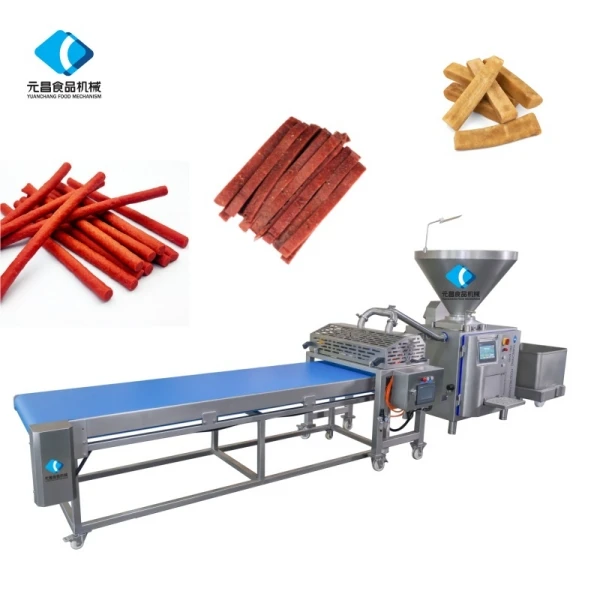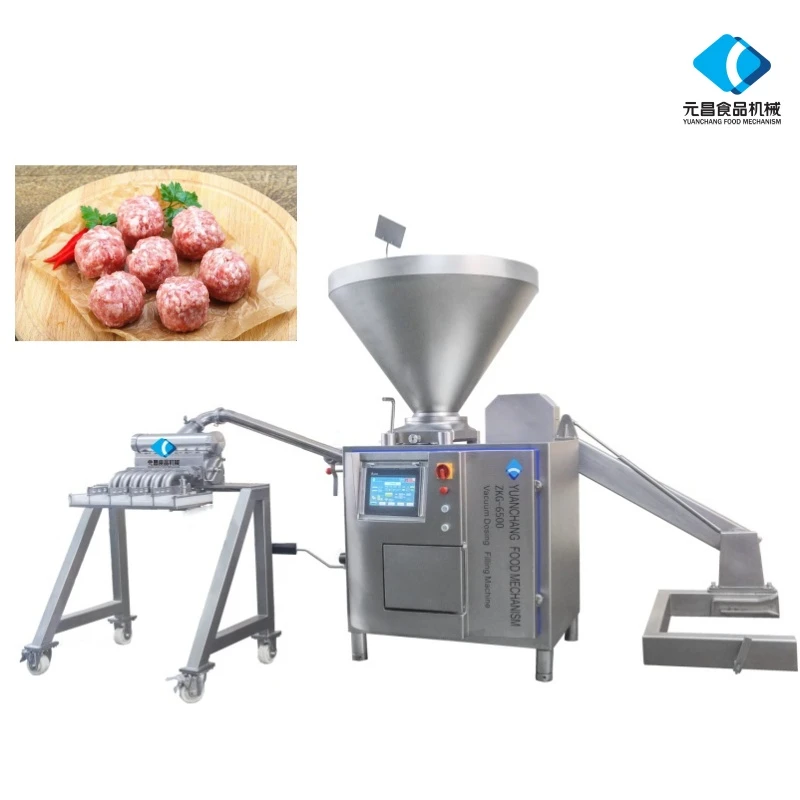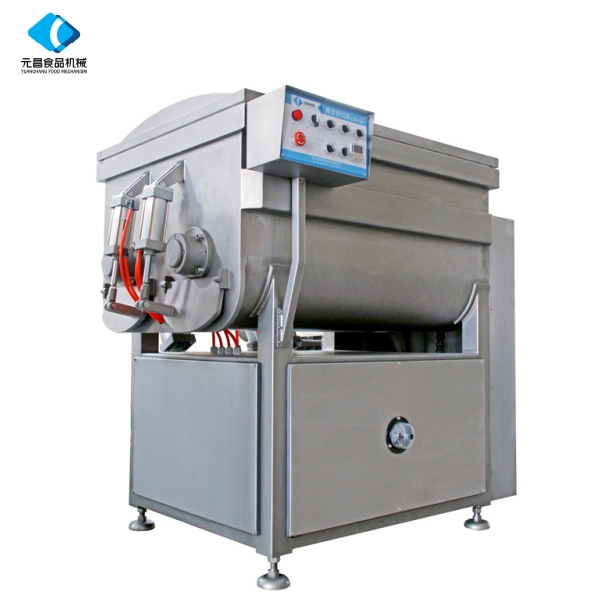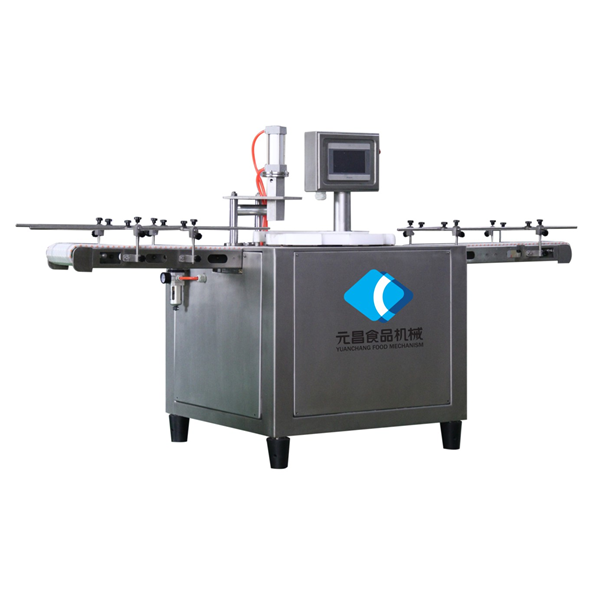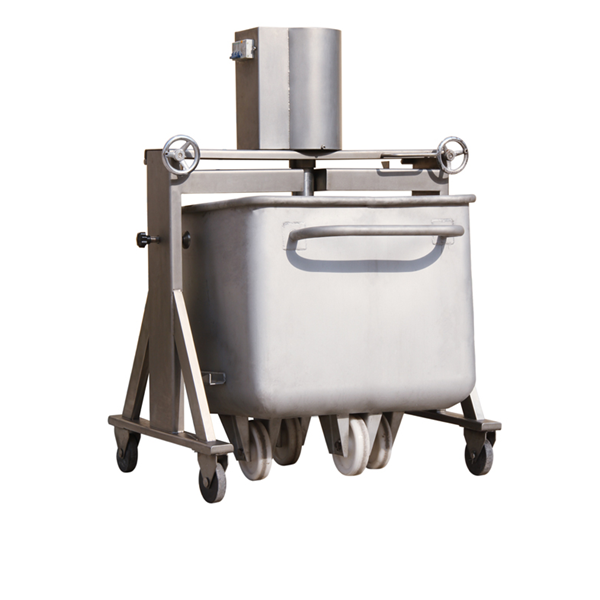- Afrikaans
- Albanian
- Amharic
- Arabic
- Armenian
- Azerbaijani
- Basque
- Belarusian
- Bengali
- Bosnian
- Bulgarian
- Catalan
- Cebuano
- chinese_simplified
- chinese_traditional
- Corsican
- Croatian
- Czech
- Danish
- Dutch
- English
- Esperanto
- Estonian
- Finnish
- French
- Frisian
- Galician
- Georgian
- German
- Greek
- Gujarati
- haitian_creole
- hausa
- hawaiian
- Hebrew
- Hindi
- Miao
- Hungarian
- Icelandic
- igbo
- Indonesian
- irish
- Italian
- Japanese
- Javanese
- Kannada
- kazakh
- Khmer
- Rwandese
- Korean
- Kurdish
- Kyrgyz
- Lao
- Latin
- Latvian
- Lithuanian
- Luxembourgish
- Macedonian
- Malgashi
- Malay
- Malayalam
- Maltese
- Maori
- Marathi
- Mongolian
- Myanmar
- Nepali
- Norwegian
- Norwegian
- Occitan
- Pashto
- Persian
- Polish
- Portuguese
- Punjabi
- Romanian
- Russian
- Samoan
- scottish-gaelic
- Serbian
- Sesotho
- Shona
- Sindhi
- Sinhala
- Slovak
- Slovenian
- Somali
- Spanish
- Sundanese
- Swahili
- Swedish
- Tagalog
- Tajik
- Tamil
- Tatar
- Telugu
- Thai
- Turkish
- Turkmen
- Ukrainian
- Urdu
- Uighur
- Uzbek
- Vietnamese
- Welsh
- Bantu
- Yiddish
- Yoruba
- Zulu
Precision Sausage Stuffer & Filler Machines for Quality Meat Production
Precision Meat Processing: The Role of Advanced Filling Technology
In the modern food processing industry, the demand for high-quality, consistently produced meat products necessitates sophisticated machinery. Central to the efficient and hygienic production of sausages is the sausage stuffer, a critical piece of equipment designed to fill casings with processed meat mixtures. While traditional methods exist, the industry's shift towards automation and precision has propelled advanced solutions like the Vacuum Sausage Filler to the forefront. These machines are engineered to optimize texture, appearance, and shelf life, ensuring product integrity from preparation to consumption.
Our focus in this comprehensive overview is to delve into the technical intricacies, market dynamics, and operational advantages of contemporary filling systems. We will explore their manufacturing process, key technical specifications, diverse application scenarios, and the tangible benefits they offer to B2B stakeholders in the meat processing sector. Emphasizing Google's standards, we aim to provide an authoritative resource for decision-makers seeking to enhance their production capabilities and product quality.
Industry Trends and Market Dynamics
The global meat processing equipment market is experiencing robust growth, driven by increasing consumer demand for processed meat products, rising awareness of food safety, and the imperative for operational efficiency. According to recent market analyses, the market for sausage processing equipment is projected to grow at a Compound Annual Growth Rate (CAGR) of over 5% from 2023 to 2030, reaching an estimated value exceeding $1.5 billion by the end of the forecast period. Key trends shaping this landscape include:
- Automation and Robotics: Manufacturers are increasingly integrating automation to minimize manual labor, reduce human error, and enhance throughput. Advanced `sausage filler machines` with robotic arms for casing handling are becoming more common.
- Emphasis on Hygiene and Food Safety: Stringent regulatory standards (e.g., HACCP, FDA) are driving demand for equipment made from food-grade stainless steel (e.g., SUS304, SUS316L) with easy-to-clean designs and features.
- Sustainability and Energy Efficiency: The industry is moving towards more energy-efficient `filling machine` designs, incorporating features like servo motor drives and optimized vacuum systems to reduce power consumption.
- Product Diversification: The rise of plant-based meat alternatives and new flavor profiles necessitates versatile `meat filler` systems capable of handling various textures and consistencies without compromising quality.
- Data Integration and IoT: Smart `vacuum stuffer` systems with sensors and data logging capabilities are emerging, allowing for real-time monitoring, predictive maintenance, and optimized production parameters.
These trends underscore the importance of investing in high-performance, reliable, and technologically advanced `sausage stuffer` solutions to remain competitive and meet evolving market demands.
Manufacturing Process Flow for a High-Precision Vacuum Sausage Filler
The production of a robust and reliable `vacuum sausage stuffer` involves a multi-stage, precision-engineered process, ensuring each component meets exacting standards for performance and longevity. Our Vacuum Sausage Filler, for instance, adheres to the following detailed workflow:
Schematic Process Steps:
- Material Selection & Sourcing: High-grade food-contact materials such as SUS304 or SUS316L stainless steel are meticulously selected for all components coming into contact with meat, ensuring corrosion resistance and hygiene. Non-contact structural components may utilize high-strength carbon steel. Critical seals and gaskets are made from FDA-approved silicones or elastomers.
- Precision Fabrication (Casting & CNC Machining):
- Casting: Large structural components like the main frame or certain pump housings might undergo precision casting to achieve specific geometries and material densities.
- Forging: Components requiring exceptional strength and wear resistance, such as specific pump rotors or cutter blades, may be forged before subsequent machining.
- CNC Machining: The majority of intricate parts, including pump chambers, precise gears, valve blocks, and filling nozzles, are manufactured using advanced multi-axis CNC machining centers. This ensures tolerances as fine as ±0.01mm, critical for smooth operation and airtight seals.
- Surface Treatment & Finishing: Stainless steel components undergo passivation, electropolishing, or fine grinding to achieve a smooth, non-porous surface that inhibits bacterial growth and simplifies cleaning. Welds are meticulously inspected and polished.
- Assembly of Sub-Systems: Specialized teams assemble individual modules:
- Vacuum System Assembly: High-efficiency vacuum pumps, filters, and sealing mechanisms are integrated.
- Filling Pump Assembly: Precision rotary vane or screw pump mechanisms are calibrated for optimal meat transfer.
- Control System Integration: PLCs (Programmable Logic Controllers), HMI (Human-Machine Interface) touchscreens, sensors, and servo motors are installed and wired, often sourced from leading international suppliers for reliability.
- Integrated Assembly: All sub-systems are assembled into the main chassis. Electrical and pneumatic connections are made, and protective casings are fitted.
- Rigorous Quality Control & Testing: Each `sausage filler` undergoes extensive testing:
- Functional Testing: Verification of all operational modes, including filling speed, portion accuracy, vacuum level, and linking functionality.
- Performance Testing: Filling various meat consistencies, measuring weight consistency, and verifying absence of air pockets.
- Durability & Stress Testing: Running the machine under continuous load conditions to identify potential weaknesses.
- Hygiene Compliance Checks: Ensuring all food contact surfaces meet ISO 22000 and HACCP standards for cleanliness and material safety.
- Safety Interlock Verification: Confirming all safety features, such as emergency stops and protective covers, are fully functional.
- Final Inspection & Certification: A comprehensive final inspection is performed, followed by certification (e.g., CE, ISO 9001, FDA-compliant materials documentation).
This meticulous process ensures that each `sausage filler machine` delivered offers exceptional performance, reliability, and an extended service life of typically 10-15 years or more with proper maintenance. The adherence to international testing standards like ISO 9001 for quality management and relevant ANSI/UL standards for electrical safety is paramount.

Image 1: High-precision components awaiting assembly for a modern vacuum sausage stuffer.
Technical Specifications: Vacuum Sausage Filler
Understanding the precise technical parameters of a `vacuum sausage stuffer` is crucial for optimizing production lines and ensuring compatibility with existing infrastructure. Below is a detailed specification table for a typical high-performance Vacuum Sausage Filler, reflecting cutting-edge technology and engineering excellence.
| Parameter | Specification |
|---|---|
| Filling Capacity | Up to 3000 kg/hour (adjustable) |
| Portioning Range | 5g - 9999g (programmable, in 0.1g increments) |
| Portioning Accuracy | ±1g (for portions up to 100g); ±0.5% (for larger portions) |
| Vacuum Level | -0.9 bar to -0.95 bar (adjustable) |
| Hopper Volume | 160L / 240L / 350L (customizable options available) |
| Material Construction | Entirely SUS304 Food-Grade Stainless Steel (SUS316L optional for specific applications) |
| Control System | PLC-based with 10-15 inch Color Touchscreen HMI (Siemens/Mitsubishi components) |
| Drive System | High-precision Servo Motor (e.g., Rexroth, Schneider) |
| Power Supply | 3 Phase, 380V/50Hz (configurable for various international standards) |
| Dimensions (L x W x H) | Approx. 1500mm x 950mm x 1900mm (Varies by model) |
| Weight | Approx. 750 kg - 1200 kg (depending on hopper size and features) |
| Operating Temperature | 0°C to 40°C |
| Noise Level | < 75 dB(A) |
| Certifications | CE, ISO 9001, HACCP Compliant Materials |
Technical Advantages of Modern Vacuum Sausage Fillers
The evolution of the `sausage filler` has brought forth significant technical advancements that directly translate into operational efficiencies and product quality improvements for meat processors. The Vacuum Sausage Filler distinguishes itself through several key advantages:
- Superior Product Quality & Texture: The integrated vacuum system removes air from the meat emulsion prior to stuffing. This prevents oxidation, eliminates air pockets, and results in a denser, smoother product with a more appealing color, extended shelf life, and significantly reduced fat smearing. This is a critical differentiator from non-vacuum `meat filler` machines.
- Exceptional Portioning Accuracy: Driven by high-precision servo motors and controlled by advanced PLCs, these machines achieve unparalleled portioning accuracy (e.g., ±1g). This minimizes product giveaway, reduces material waste, and ensures consistent product weight, which is vital for compliance and cost control.
- Enhanced Production Efficiency: With high filling capacities and rapid casing changeovers, a modern `vacuum stuffer` significantly boosts throughput. The continuous filling process, often paired with automatic linking and twisting units, minimizes downtime and maximizes productivity.
- Hygienic Design & Ease of Cleaning: Constructed from food-grade stainless steel with polished surfaces and minimal crevices, these machines are designed for easy and thorough cleaning, often incorporating Clean-In-Place (CIP) capabilities. This drastically reduces the risk of bacterial contamination and ensures compliance with strict food safety regulations.
- Versatility Across Product Types: Advanced `filling machine` systems are capable of processing a wide range of meat emulsions, from fine-ground to coarse-ground products, as well as plant-based alternatives. They can handle various natural, collagen, and artificial casings, offering flexibility for diverse product lines.
- User-Friendly Operation & Connectivity: Intuitive HMI touchscreens simplify operation, allowing for quick recipe changes, diagnostics, and monitoring. Many models offer data logging and network connectivity for integration into broader Industry 4.0 production environments.
- Energy Efficiency: Modern servo-driven systems consume less power compared to older hydraulic or pneumatic systems, contributing to lower operating costs and a reduced environmental footprint.
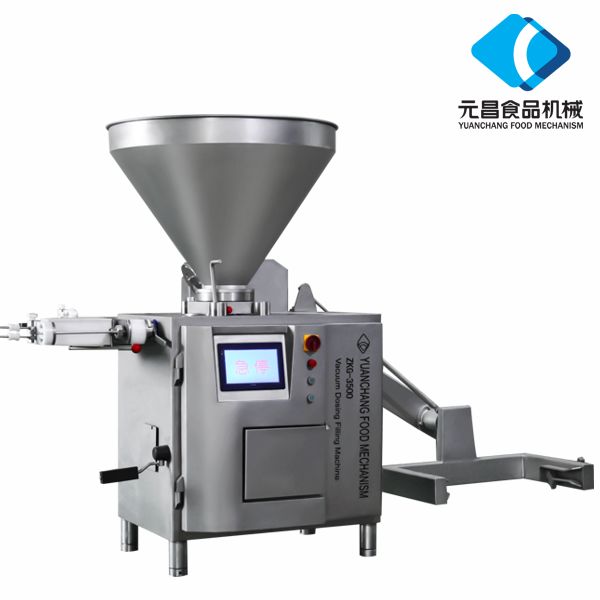
Image 2: A vacuum sausage filler in operation, showcasing its sleek, hygienic design.
Application Scenarios and Target Industries
The versatility and precision of a `vacuum sausage filler` make it indispensable across a spectrum of food processing environments. Its primary target industries and typical application scenarios include:
- Large-Scale Meat Processing Plants: For high-volume production of fresh sausages, cooked sausages, frankfurters, bologna, and specialized meat products. The high throughput and automation capabilities are critical here.
- Delicatessens and Mid-Size Butchers: Enabling smaller operations to produce premium, artisanal sausages with consistent quality and appearance, enhancing their market competitiveness.
- Industrial Kitchens and Catering Services: For preparing large quantities of filled meat products for institutional consumption, where consistency and hygiene are paramount.
- Pet Food Manufacturing: Specialized versions of the `sausage filler machine` are used for producing high-quality, portioned pet food products in chub or other casing formats.
- Plant-Based Protein Production: Increasingly, these machines are adapted to handle plant-based meat alternatives, offering the same level of precision and quality for vegan and vegetarian sausage products.
- Specialty Food Production: Beyond traditional sausages, these machines can fill other food items like purees, patés, and even some dairy products into casings.
In all these scenarios, the advantages of a `sausage filler` such as energy saving through optimized servo drives and excellent corrosion resistance from SUS304/316L construction contribute to lower operational costs and enhanced longevity, even in challenging, humid processing environments.
Vendor Comparison: Key Differentiators in Sausage Filling Solutions
Selecting the right `sausage filler` vendor is a strategic decision that impacts long-term operational efficiency, product quality, and return on investment. While many manufacturers offer filling solutions, discerning buyers focus on several key differentiators. Below is a comparative overview highlighting critical factors that distinguish leading suppliers of `vacuum stuffer` technology:
| Feature | Premium Vendor (e.g., YC Meat Mech) | Standard Vendor |
|---|---|---|
| Vacuum System Effectiveness | Advanced dual-stage vacuum pump, achieving -0.95 bar consistently, minimal air inclusions. | Single-stage vacuum, often less consistent, -0.8 to -0.85 bar, higher risk of air pockets. |
| Portioning Precision | Servo-driven feed, PLC-controlled, ±1g accuracy, real-time feedback loop. | Mechanical drive or less advanced servo, ±2-5g accuracy, higher product giveaway. |
| Material Quality & Hygiene | Full SUS304/316L, electropolished, seamless welds, FDA/CE/HACCP certified. | Mixed-grade stainless steel, visible welds, basic finish, general food-grade compliance. |
| Control System & Automation | Siemens/Mitsubishi PLC, intuitive color HMI, multi-language support, recipe management, optional IoT. | Basic PLC, monochrome display, limited recipe storage, less diagnostic capability. |
| Durability & Service Life | Robust construction, high-quality components, expected 10-15+ years service life. | Lighter construction, generic components, 5-8 years typical service life. |
| After-Sales Support & Warranty | Comprehensive global support, 1-2 year full warranty, readily available spare parts, remote diagnostics. | Limited regional support, 6-12 month basic warranty, longer lead times for parts. |
Choosing a vendor like YC Meat Mech, with a proven track record and adherence to international quality standards, ensures not only a superior `meat filler` but also long-term operational reliability and support. Our certifications (e.g., ISO 9001, CE) and a decade-plus of service to clients worldwide underscore our commitment to authoritative solutions.
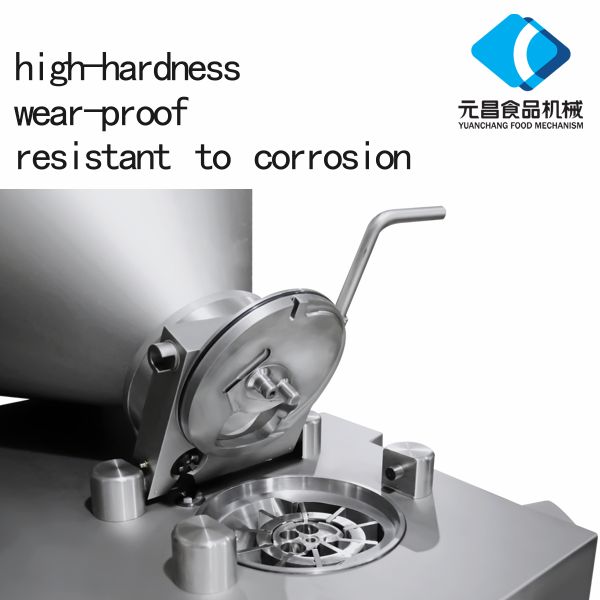
Image 3: A modern vacuum sausage filler displaying its control interface and robust construction.
Customized Solutions and Integration Capabilities
Recognizing that no two meat processing operations are identical, leading `sausage filler` providers offer extensive customization and integration capabilities. This ensures the machine seamlessly fits into existing production lines and meets specific operational requirements. Customization options often include:
- Hopper Size and Configuration: Tailoring hopper volumes (e.g., 160L to 350L+) and designs (e.g., elevated for direct grinder feed) to match batch sizes and upstream equipment.
- Filling System Adjustments: Modifying pump types (e.g., vane, screw) and nozzle designs to optimize performance for unique product consistencies (e.g., highly viscous products, products with large particulates).
- Integration with Ancillary Equipment: Seamless integration with automatic linking machines, casing loaders, clipping machines, hanging lines, and packaging systems to create a fully automated production line.
- Specialized Casing Management: Custom solutions for handling delicate natural casings or specific synthetic casing types, including automatic casing magazine systems.
- Advanced Control & Data Features: Developing bespoke software functionalities, enhanced data reporting, remote access capabilities, and integration with SCADA or ERP systems for comprehensive production management.
- Compliance with Regional Standards: Configuring electrical systems, safety features, and documentation to meet diverse international regulatory requirements (e.g., UL, CSA, ATEX).
Our engineering team collaborates closely with clients to conduct thorough needs assessments, designing a `filling machine` solution that delivers optimal performance and maximum ROI, ensuring that the technology aligns perfectly with their operational nuances.
Application Case Studies and Customer Experience
Real-world application demonstrates the transformative impact of advanced `sausage filler` technology. Our commitment to client success is reflected in numerous partnerships and positive feedback.
Case Study 1: Large-Scale Poultry Sausage Producer
A major European poultry processor faced challenges with inconsistent product weight and texture in their automated chicken sausage line. Prior to implementing our `vacuum sausage filler`, they reported a 3-5% product giveaway due to inaccurate portioning and frequent complaints about air pockets leading to spoilage.
- Solution: We installed a custom-configured Vacuum Sausage Filler with an integrated automatic linking unit, calibrated specifically for poultry emulsions.
- Results: Within three months, portioning accuracy improved to less than ±0.5g, reducing product giveaway by over 80%. The vacuum system eliminated virtually all air inclusions, extending product shelf life by an average of 3 days and significantly enhancing sensory qualities. Throughput increased by 25% due to higher efficiency and reduced rework.
- Customer Feedback: "The precision and reliability of this vacuum stuffer have fundamentally changed our production. We've seen a direct impact on our bottom line and customer satisfaction." - Production Manager.
Case Study 2: Artisan Pork Delicatessen Expansion
An expanding artisan delicatessen specializing in gourmet pork sausages sought to scale production without compromising the handcrafted quality their brand was known for. Their existing `meat filler` could not maintain consistency at higher volumes.
- Solution: We provided a mid-sized `sausage filler` model, optimized for smaller batch flexibility, featuring a user-friendly HMI with multiple recipe storage capabilities to easily switch between different sausage varieties.
- Results: The delicatessen was able to triple its weekly output while maintaining superior texture and appearance across all product lines. The vacuum technology preserved the integrity of their coarsely ground products, preventing smearing and ensuring distinct flavor profiles.
- Customer Feedback: "Our new `sausage filler machine` has allowed us to grow our business without sacrificing the artisanal quality our customers expect. It's incredibly reliable and intuitive." - Owner & Head Butcher.
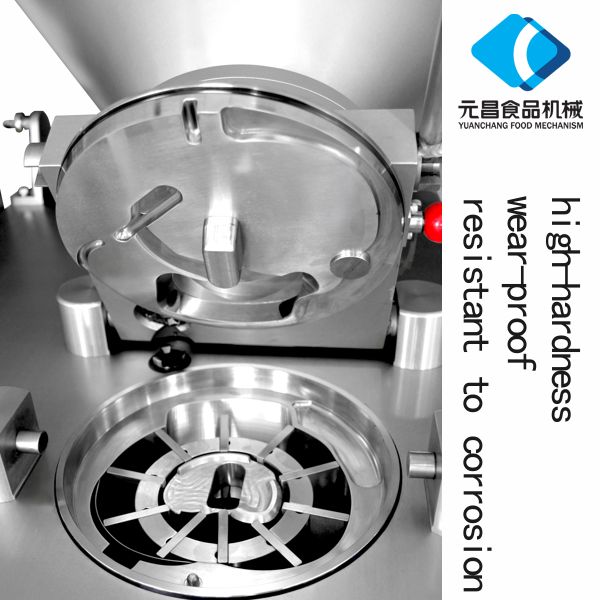
Image 4: A full production line featuring a vacuum sausage filler and automated linking machine, demonstrating integrated operation.
Ensuring Trustworthiness: FAQ, Lead Time, Warranty & Support
Frequently Asked Questions (FAQ)
Q: What is the typical lead time for a Vacuum Sausage Filler?
A: Standard models typically have a lead time of 4-6 weeks from order confirmation. Customized solutions may extend this to 8-12 weeks, depending on the complexity. We maintain transparent communication throughout the fulfillment process.
Q: What type of warranty is offered?
A: All our `filling machine` products come with a comprehensive 1-year warranty covering manufacturing defects and major components. Extended warranty options are available for added peace of mind. Consumables like seals and blades are not typically covered but are readily available.
Q: How do you handle after-sales support and spare parts?
A: We offer global after-sales support, including remote diagnostics, phone/video assistance, and on-site technical visits by certified engineers if required. We maintain a large inventory of genuine spare parts to ensure minimal downtime for our clients. Parts are typically shipped within 24-48 hours for urgent requirements.
Q: Can your `sausage filler` integrate with existing linking or clipping machines?
A: Yes, our Vacuum Sausage Fillers are designed for high compatibility and can be seamlessly integrated with most existing automatic linking machines, clippers, and other downstream equipment. Our technical team assists with compatibility assessments and integration planning.
Q: What are the power requirements for your machines?
A: Our standard machines typically require a 3-phase, 380V/50Hz power supply. However, we can configure machines to meet various international electrical standards (e.g., 220V/60Hz, 480V/60Hz) based on client specifications.
Fulfillment Details
Our order fulfillment process is designed for efficiency and transparency. Upon order confirmation and receipt of the initial deposit, production commences, followed by rigorous internal testing. Clients are provided with regular updates on their order status. Final shipment is arranged upon completion of payment, with comprehensive documentation, including operational manuals, maintenance guides, and certification papers. We partner with reliable global logistics providers to ensure timely and safe delivery.
Commitment to Support
Our commitment extends beyond the sale. We pride ourselves on building long-term partnerships through exceptional customer support. Our dedicated team is available to assist with installation, training, routine maintenance, and troubleshooting, ensuring your `vacuum sausage filler` operates at peak performance throughout its extensive service life. We uphold the highest standards of professionalism and responsiveness.
References
1. Food and Agriculture Organization of the United Nations (FAO). The State of Food and Agriculture (SOFA). Rome, 2023.
2. Grand View Research. Meat Processing Equipment Market Size, Share & Trends Analysis Report By Product, By Meat Type, By Operation, By Region, And Segment Forecasts, 2023 - 2030. San Francisco, 2023.
3. International Organization for Standardization (ISO). ISO 22000 Food safety management systems – Requirements for any organization in the food chain. Geneva, 2018.
4. U.S. Food and Drug Administration (FDA). Food Safety Modernization Act (FSMA). Washington D.C., 2011.
-
Filling Flow Divider - Precision, Hygienic Multiline DosingNewsNov.18,2025
-
Hopper Trolley: Heavy-Duty, Ergonomic, Easy DischargeNewsNov.18,2025
-
Frozen Meat Slicer for Ultra-Thin, Precise, Safe CutsNewsNov.17,2025
-
Smoke House Machine | Precise, Energy-Efficient, HACCP-ReadyNewsNov.17,2025
-
Smoke House Machine: Uniform, Energy-Efficient SmokingNewsNov.11,2025
-
Meat Filling Machine - Stainless, Precise, High OutputNewsNov.11,2025
Precision Sausage Stuffer & Filler Machines for Quality Meat Production
Precision Meat Processing: The Role of Advanced Filling Technology
In the modern food processing industry, the demand for high-quality, consistently produced meat products necessitates sophisticated machinery. Central to the efficient and hygienic production of sausages is the sausage stuffer, a critical piece of equipment designed to fill casings with processed meat mixtures. While traditional methods exist, the industry's shift towards automation and precision has propelled advanced solutions like the Vacuum Sausage Filler to the forefront. These machines are engineered to optimize texture, appearance, and shelf life, ensuring product integrity from preparation to consumption.
Our focus in this comprehensive overview is to delve into the technical intricacies, market dynamics, and operational advantages of contemporary filling systems. We will explore their manufacturing process, key technical specifications, diverse application scenarios, and the tangible benefits they offer to B2B stakeholders in the meat processing sector. Emphasizing Google's standards, we aim to provide an authoritative resource for decision-makers seeking to enhance their production capabilities and product quality.
Industry Trends and Market Dynamics
The global meat processing equipment market is experiencing robust growth, driven by increasing consumer demand for processed meat products, rising awareness of food safety, and the imperative for operational efficiency. According to recent market analyses, the market for sausage processing equipment is projected to grow at a Compound Annual Growth Rate (CAGR) of over 5% from 2023 to 2030, reaching an estimated value exceeding $1.5 billion by the end of the forecast period. Key trends shaping this landscape include:
- Automation and Robotics: Manufacturers are increasingly integrating automation to minimize manual labor, reduce human error, and enhance throughput. Advanced `sausage filler machines` with robotic arms for casing handling are becoming more common.
- Emphasis on Hygiene and Food Safety: Stringent regulatory standards (e.g., HACCP, FDA) are driving demand for equipment made from food-grade stainless steel (e.g., SUS304, SUS316L) with easy-to-clean designs and features.
- Sustainability and Energy Efficiency: The industry is moving towards more energy-efficient `filling machine` designs, incorporating features like servo motor drives and optimized vacuum systems to reduce power consumption.
- Product Diversification: The rise of plant-based meat alternatives and new flavor profiles necessitates versatile `meat filler` systems capable of handling various textures and consistencies without compromising quality.
- Data Integration and IoT: Smart `vacuum stuffer` systems with sensors and data logging capabilities are emerging, allowing for real-time monitoring, predictive maintenance, and optimized production parameters.
These trends underscore the importance of investing in high-performance, reliable, and technologically advanced `sausage stuffer` solutions to remain competitive and meet evolving market demands.
Manufacturing Process Flow for a High-Precision Vacuum Sausage Filler
The production of a robust and reliable `vacuum sausage stuffer` involves a multi-stage, precision-engineered process, ensuring each component meets exacting standards for performance and longevity. Our Vacuum Sausage Filler, for instance, adheres to the following detailed workflow:
Schematic Process Steps:
- Material Selection & Sourcing: High-grade food-contact materials such as SUS304 or SUS316L stainless steel are meticulously selected for all components coming into contact with meat, ensuring corrosion resistance and hygiene. Non-contact structural components may utilize high-strength carbon steel. Critical seals and gaskets are made from FDA-approved silicones or elastomers.
- Precision Fabrication (Casting & CNC Machining):
- Casting: Large structural components like the main frame or certain pump housings might undergo precision casting to achieve specific geometries and material densities.
- Forging: Components requiring exceptional strength and wear resistance, such as specific pump rotors or cutter blades, may be forged before subsequent machining.
- CNC Machining: The majority of intricate parts, including pump chambers, precise gears, valve blocks, and filling nozzles, are manufactured using advanced multi-axis CNC machining centers. This ensures tolerances as fine as ±0.01mm, critical for smooth operation and airtight seals.
- Surface Treatment & Finishing: Stainless steel components undergo passivation, electropolishing, or fine grinding to achieve a smooth, non-porous surface that inhibits bacterial growth and simplifies cleaning. Welds are meticulously inspected and polished.
- Assembly of Sub-Systems: Specialized teams assemble individual modules:
- Vacuum System Assembly: High-efficiency vacuum pumps, filters, and sealing mechanisms are integrated.
- Filling Pump Assembly: Precision rotary vane or screw pump mechanisms are calibrated for optimal meat transfer.
- Control System Integration: PLCs (Programmable Logic Controllers), HMI (Human-Machine Interface) touchscreens, sensors, and servo motors are installed and wired, often sourced from leading international suppliers for reliability.
- Integrated Assembly: All sub-systems are assembled into the main chassis. Electrical and pneumatic connections are made, and protective casings are fitted.
- Rigorous Quality Control & Testing: Each `sausage filler` undergoes extensive testing:
- Functional Testing: Verification of all operational modes, including filling speed, portion accuracy, vacuum level, and linking functionality.
- Performance Testing: Filling various meat consistencies, measuring weight consistency, and verifying absence of air pockets.
- Durability & Stress Testing: Running the machine under continuous load conditions to identify potential weaknesses.
- Hygiene Compliance Checks: Ensuring all food contact surfaces meet ISO 22000 and HACCP standards for cleanliness and material safety.
- Safety Interlock Verification: Confirming all safety features, such as emergency stops and protective covers, are fully functional.
- Final Inspection & Certification: A comprehensive final inspection is performed, followed by certification (e.g., CE, ISO 9001, FDA-compliant materials documentation).
This meticulous process ensures that each `sausage filler machine` delivered offers exceptional performance, reliability, and an extended service life of typically 10-15 years or more with proper maintenance. The adherence to international testing standards like ISO 9001 for quality management and relevant ANSI/UL standards for electrical safety is paramount.

Image 1: High-precision components awaiting assembly for a modern vacuum sausage stuffer.
Technical Specifications: Vacuum Sausage Filler
Understanding the precise technical parameters of a `vacuum sausage stuffer` is crucial for optimizing production lines and ensuring compatibility with existing infrastructure. Below is a detailed specification table for a typical high-performance Vacuum Sausage Filler, reflecting cutting-edge technology and engineering excellence.
| Parameter | Specification |
|---|---|
| Filling Capacity | Up to 3000 kg/hour (adjustable) |
| Portioning Range | 5g - 9999g (programmable, in 0.1g increments) |
| Portioning Accuracy | ±1g (for portions up to 100g); ±0.5% (for larger portions) |
| Vacuum Level | -0.9 bar to -0.95 bar (adjustable) |
| Hopper Volume | 160L / 240L / 350L (customizable options available) |
| Material Construction | Entirely SUS304 Food-Grade Stainless Steel (SUS316L optional for specific applications) |
| Control System | PLC-based with 10-15 inch Color Touchscreen HMI (Siemens/Mitsubishi components) |
| Drive System | High-precision Servo Motor (e.g., Rexroth, Schneider) |
| Power Supply | 3 Phase, 380V/50Hz (configurable for various international standards) |
| Dimensions (L x W x H) | Approx. 1500mm x 950mm x 1900mm (Varies by model) |
| Weight | Approx. 750 kg - 1200 kg (depending on hopper size and features) |
| Operating Temperature | 0°C to 40°C |
| Noise Level | < 75 dB(A) |
| Certifications | CE, ISO 9001, HACCP Compliant Materials |
Technical Advantages of Modern Vacuum Sausage Fillers
The evolution of the `sausage filler` has brought forth significant technical advancements that directly translate into operational efficiencies and product quality improvements for meat processors. The Vacuum Sausage Filler distinguishes itself through several key advantages:
- Superior Product Quality & Texture: The integrated vacuum system removes air from the meat emulsion prior to stuffing. This prevents oxidation, eliminates air pockets, and results in a denser, smoother product with a more appealing color, extended shelf life, and significantly reduced fat smearing. This is a critical differentiator from non-vacuum `meat filler` machines.
- Exceptional Portioning Accuracy: Driven by high-precision servo motors and controlled by advanced PLCs, these machines achieve unparalleled portioning accuracy (e.g., ±1g). This minimizes product giveaway, reduces material waste, and ensures consistent product weight, which is vital for compliance and cost control.
- Enhanced Production Efficiency: With high filling capacities and rapid casing changeovers, a modern `vacuum stuffer` significantly boosts throughput. The continuous filling process, often paired with automatic linking and twisting units, minimizes downtime and maximizes productivity.
- Hygienic Design & Ease of Cleaning: Constructed from food-grade stainless steel with polished surfaces and minimal crevices, these machines are designed for easy and thorough cleaning, often incorporating Clean-In-Place (CIP) capabilities. This drastically reduces the risk of bacterial contamination and ensures compliance with strict food safety regulations.
- Versatility Across Product Types: Advanced `filling machine` systems are capable of processing a wide range of meat emulsions, from fine-ground to coarse-ground products, as well as plant-based alternatives. They can handle various natural, collagen, and artificial casings, offering flexibility for diverse product lines.
- User-Friendly Operation & Connectivity: Intuitive HMI touchscreens simplify operation, allowing for quick recipe changes, diagnostics, and monitoring. Many models offer data logging and network connectivity for integration into broader Industry 4.0 production environments.
- Energy Efficiency: Modern servo-driven systems consume less power compared to older hydraulic or pneumatic systems, contributing to lower operating costs and a reduced environmental footprint.

Image 2: A vacuum sausage filler in operation, showcasing its sleek, hygienic design.
Application Scenarios and Target Industries
The versatility and precision of a `vacuum sausage filler` make it indispensable across a spectrum of food processing environments. Its primary target industries and typical application scenarios include:
- Large-Scale Meat Processing Plants: For high-volume production of fresh sausages, cooked sausages, frankfurters, bologna, and specialized meat products. The high throughput and automation capabilities are critical here.
- Delicatessens and Mid-Size Butchers: Enabling smaller operations to produce premium, artisanal sausages with consistent quality and appearance, enhancing their market competitiveness.
- Industrial Kitchens and Catering Services: For preparing large quantities of filled meat products for institutional consumption, where consistency and hygiene are paramount.
- Pet Food Manufacturing: Specialized versions of the `sausage filler machine` are used for producing high-quality, portioned pet food products in chub or other casing formats.
- Plant-Based Protein Production: Increasingly, these machines are adapted to handle plant-based meat alternatives, offering the same level of precision and quality for vegan and vegetarian sausage products.
- Specialty Food Production: Beyond traditional sausages, these machines can fill other food items like purees, patés, and even some dairy products into casings.
In all these scenarios, the advantages of a `sausage filler` such as energy saving through optimized servo drives and excellent corrosion resistance from SUS304/316L construction contribute to lower operational costs and enhanced longevity, even in challenging, humid processing environments.
Vendor Comparison: Key Differentiators in Sausage Filling Solutions
Selecting the right `sausage filler` vendor is a strategic decision that impacts long-term operational efficiency, product quality, and return on investment. While many manufacturers offer filling solutions, discerning buyers focus on several key differentiators. Below is a comparative overview highlighting critical factors that distinguish leading suppliers of `vacuum stuffer` technology:
| Feature | Premium Vendor (e.g., YC Meat Mech) | Standard Vendor |
|---|---|---|
| Vacuum System Effectiveness | Advanced dual-stage vacuum pump, achieving -0.95 bar consistently, minimal air inclusions. | Single-stage vacuum, often less consistent, -0.8 to -0.85 bar, higher risk of air pockets. |
| Portioning Precision | Servo-driven feed, PLC-controlled, ±1g accuracy, real-time feedback loop. | Mechanical drive or less advanced servo, ±2-5g accuracy, higher product giveaway. |
| Material Quality & Hygiene | Full SUS304/316L, electropolished, seamless welds, FDA/CE/HACCP certified. | Mixed-grade stainless steel, visible welds, basic finish, general food-grade compliance. |
| Control System & Automation | Siemens/Mitsubishi PLC, intuitive color HMI, multi-language support, recipe management, optional IoT. | Basic PLC, monochrome display, limited recipe storage, less diagnostic capability. |
| Durability & Service Life | Robust construction, high-quality components, expected 10-15+ years service life. | Lighter construction, generic components, 5-8 years typical service life. |
| After-Sales Support & Warranty | Comprehensive global support, 1-2 year full warranty, readily available spare parts, remote diagnostics. | Limited regional support, 6-12 month basic warranty, longer lead times for parts. |
Choosing a vendor like YC Meat Mech, with a proven track record and adherence to international quality standards, ensures not only a superior `meat filler` but also long-term operational reliability and support. Our certifications (e.g., ISO 9001, CE) and a decade-plus of service to clients worldwide underscore our commitment to authoritative solutions.

Image 3: A modern vacuum sausage filler displaying its control interface and robust construction.
Customized Solutions and Integration Capabilities
Recognizing that no two meat processing operations are identical, leading `sausage filler` providers offer extensive customization and integration capabilities. This ensures the machine seamlessly fits into existing production lines and meets specific operational requirements. Customization options often include:
- Hopper Size and Configuration: Tailoring hopper volumes (e.g., 160L to 350L+) and designs (e.g., elevated for direct grinder feed) to match batch sizes and upstream equipment.
- Filling System Adjustments: Modifying pump types (e.g., vane, screw) and nozzle designs to optimize performance for unique product consistencies (e.g., highly viscous products, products with large particulates).
- Integration with Ancillary Equipment: Seamless integration with automatic linking machines, casing loaders, clipping machines, hanging lines, and packaging systems to create a fully automated production line.
- Specialized Casing Management: Custom solutions for handling delicate natural casings or specific synthetic casing types, including automatic casing magazine systems.
- Advanced Control & Data Features: Developing bespoke software functionalities, enhanced data reporting, remote access capabilities, and integration with SCADA or ERP systems for comprehensive production management.
- Compliance with Regional Standards: Configuring electrical systems, safety features, and documentation to meet diverse international regulatory requirements (e.g., UL, CSA, ATEX).
Our engineering team collaborates closely with clients to conduct thorough needs assessments, designing a `filling machine` solution that delivers optimal performance and maximum ROI, ensuring that the technology aligns perfectly with their operational nuances.
Application Case Studies and Customer Experience
Real-world application demonstrates the transformative impact of advanced `sausage filler` technology. Our commitment to client success is reflected in numerous partnerships and positive feedback.
Case Study 1: Large-Scale Poultry Sausage Producer
A major European poultry processor faced challenges with inconsistent product weight and texture in their automated chicken sausage line. Prior to implementing our `vacuum sausage filler`, they reported a 3-5% product giveaway due to inaccurate portioning and frequent complaints about air pockets leading to spoilage.
- Solution: We installed a custom-configured Vacuum Sausage Filler with an integrated automatic linking unit, calibrated specifically for poultry emulsions.
- Results: Within three months, portioning accuracy improved to less than ±0.5g, reducing product giveaway by over 80%. The vacuum system eliminated virtually all air inclusions, extending product shelf life by an average of 3 days and significantly enhancing sensory qualities. Throughput increased by 25% due to higher efficiency and reduced rework.
- Customer Feedback: "The precision and reliability of this vacuum stuffer have fundamentally changed our production. We've seen a direct impact on our bottom line and customer satisfaction." - Production Manager.
Case Study 2: Artisan Pork Delicatessen Expansion
An expanding artisan delicatessen specializing in gourmet pork sausages sought to scale production without compromising the handcrafted quality their brand was known for. Their existing `meat filler` could not maintain consistency at higher volumes.
- Solution: We provided a mid-sized `sausage filler` model, optimized for smaller batch flexibility, featuring a user-friendly HMI with multiple recipe storage capabilities to easily switch between different sausage varieties.
- Results: The delicatessen was able to triple its weekly output while maintaining superior texture and appearance across all product lines. The vacuum technology preserved the integrity of their coarsely ground products, preventing smearing and ensuring distinct flavor profiles.
- Customer Feedback: "Our new `sausage filler machine` has allowed us to grow our business without sacrificing the artisanal quality our customers expect. It's incredibly reliable and intuitive." - Owner & Head Butcher.

Image 4: A full production line featuring a vacuum sausage filler and automated linking machine, demonstrating integrated operation.
Ensuring Trustworthiness: FAQ, Lead Time, Warranty & Support
Frequently Asked Questions (FAQ)
Q: What is the typical lead time for a Vacuum Sausage Filler?
A: Standard models typically have a lead time of 4-6 weeks from order confirmation. Customized solutions may extend this to 8-12 weeks, depending on the complexity. We maintain transparent communication throughout the fulfillment process.
Q: What type of warranty is offered?
A: All our `filling machine` products come with a comprehensive 1-year warranty covering manufacturing defects and major components. Extended warranty options are available for added peace of mind. Consumables like seals and blades are not typically covered but are readily available.
Q: How do you handle after-sales support and spare parts?
A: We offer global after-sales support, including remote diagnostics, phone/video assistance, and on-site technical visits by certified engineers if required. We maintain a large inventory of genuine spare parts to ensure minimal downtime for our clients. Parts are typically shipped within 24-48 hours for urgent requirements.
Q: Can your `sausage filler` integrate with existing linking or clipping machines?
A: Yes, our Vacuum Sausage Fillers are designed for high compatibility and can be seamlessly integrated with most existing automatic linking machines, clippers, and other downstream equipment. Our technical team assists with compatibility assessments and integration planning.
Q: What are the power requirements for your machines?
A: Our standard machines typically require a 3-phase, 380V/50Hz power supply. However, we can configure machines to meet various international electrical standards (e.g., 220V/60Hz, 480V/60Hz) based on client specifications.
Fulfillment Details
Our order fulfillment process is designed for efficiency and transparency. Upon order confirmation and receipt of the initial deposit, production commences, followed by rigorous internal testing. Clients are provided with regular updates on their order status. Final shipment is arranged upon completion of payment, with comprehensive documentation, including operational manuals, maintenance guides, and certification papers. We partner with reliable global logistics providers to ensure timely and safe delivery.
Commitment to Support
Our commitment extends beyond the sale. We pride ourselves on building long-term partnerships through exceptional customer support. Our dedicated team is available to assist with installation, training, routine maintenance, and troubleshooting, ensuring your `vacuum sausage filler` operates at peak performance throughout its extensive service life. We uphold the highest standards of professionalism and responsiveness.
References
1. Food and Agriculture Organization of the United Nations (FAO). The State of Food and Agriculture (SOFA). Rome, 2023.
2. Grand View Research. Meat Processing Equipment Market Size, Share & Trends Analysis Report By Product, By Meat Type, By Operation, By Region, And Segment Forecasts, 2023 - 2030. San Francisco, 2023.
3. International Organization for Standardization (ISO). ISO 22000 Food safety management systems – Requirements for any organization in the food chain. Geneva, 2018.
4. U.S. Food and Drug Administration (FDA). Food Safety Modernization Act (FSMA). Washington D.C., 2011.





